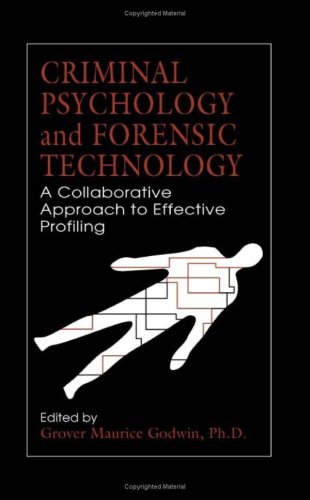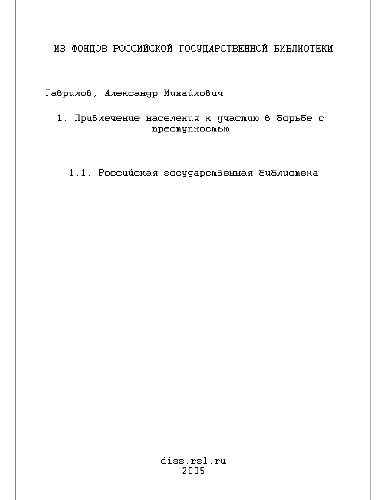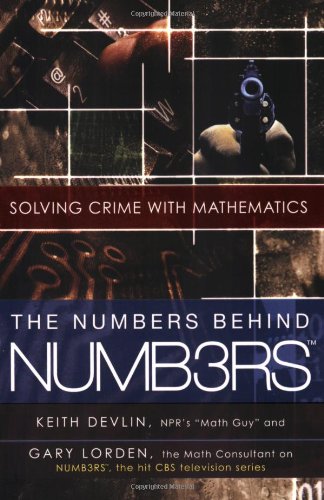Grover Maurice Godwin9780849323584, 0-8493-2358-4
Table of contents :
EEn……Page 1
Criminal Psychology and Forensic Technology: A Collaborative Approach to Effective Profiling……Page 2
Back Cover……Page 3
Copyright Info……Page 5
Preface……Page 6
Heuristics and Biases in Decision Making……Page 7
Post Hoc Fallacy……Page 8
Acknowledgments……Page 10
About the Author……Page 11
Introduction……Page 12
Section 1. Forensic Science and Criminal Investigations……Page 13
Section 4. Profiling and Linking Crimes……Page 14
Section 6. Psycho-Geographical Profiling……Page 15
A Final Thought……Page 16
Contributors……Page 17
Dedication……Page 21
TOC……Page 22
1.1.1 Introduction to Forensic Archaeology and Anthropology……Page 24
1.1.2 Search and Location……Page 26
1.1.2.1 Cartography……Page 27
1.1.2.3 Landscape and Vegetation Appraisal……Page 28
1.1.2.4 Geophysical Techniques……Page 29
1.1.2.5 Other Search Methods……Page 30
1.1.3 Excavation and Recovery……Page 32
1.1.4 Passive Conservation of Materials……Page 33
1.1.5 Forensic Anthropology……Page 34
1.1.6.1 Adaptation……Page 35
1.1.7 Conclusion……Page 36
1.2 Palynology: A New Tool for the Forensic Investigator……Page 37
1.2.1 Historical Perspective……Page 38
1.2.2 Palynomorph Production and Environments……Page 41
1.2.3 Forensic Palynomorph Collection……Page 42
1.2.4 Forensic Palynology and Illegal Drugs……Page 43
1.2.5 Additional Forensic Palynology Applications……Page 44
1.2.7 Hydrochloric Acid (Hcl)……Page 45
1.2.9 Potassium Hydroxide (KOH)……Page 46
1.2.11 Staining……Page 47
1.2.12 Mounting Preparation……Page 48
1.2.14 Summary……Page 49
1.3 Forensic Entomology: A Valuable Resource for Death Investigations……Page 51
1.3.1.2 Cases of Abuse and Neglect……Page 53
1.3.2.1 A Murdered Army Private……Page 54
1.3.2.2 The Missing Man Who Wasn’t……Page 56
1.3.2.3 Where Have You Been?……Page 57
References……Page 58
2.1.2 Information……Page 62
2.1.4 The Intelligence Process……Page 63
2.1.8 Strategic Intelligence……Page 65
2.1.11.1 Strategy Is Key to Proactive Enforcement……Page 66
2.1.12 Intelligence Analysis Serves Management……Page 67
2.1.16 Action-Oriented……Page 68
2.2 Construction of Offender Profiles Using Fuzzy Logic……Page 70
2.2.1 Nature of Fuzzy Variables……Page 71
2.2.3 Modeling Offender Profiles……Page 72
2.2.4 Technique……Page 73
2.2.5 Aggregation Techniques……Page 75
2.2.6 Hypothetical Example……Page 76
2.2.7 Implications……Page 77
2.3.1 The Origins of the FBI Serial Murder Project……Page 81
2.3.2 The Organized Serial Murderer……Page 82
2.3.3 The Disorganized Serial Murderer……Page 84
2.3.5 Reliability of the FBI Serial Murderer Sample……Page 86
2.3.6 Inferring Behavior from Fantasy in the FBI Model……Page 87
2.3.7 Validity of the FBI Serial Murder Model……Page 88
2.3.9 False Dichotomization of Variables……Page 89
2.3.11 The Personality to Behavior Confusion……Page 90
2.3.12.1 Sewell’s Approach……Page 91
2.3.14 Hickey’s Approach……Page 92
2.3.15 The Dietz Approach……Page 93
2.3.16 Keppel and Walter Approach……Page 94
2.3.18 Induction as Systematization……Page 95
2.3.19 Deriving Inductive Profiles from Deductive Experiences……Page 96
2.3.20 A Move Towards a Facet Classification of Serial Murderers……Page 97
2.4 Criminal Psychological Profiling in Violent Crime Investigations: a Comparative Assessment of Accuracy……Page 99
2.4.2 Investigative Experience……Page 100
2.4.4 Intuition……Page 101
2.4.5.1 Participants……Page 103
2.4.6 Materials……Page 104
2.4.7 Procedure……Page 105
2.4.8.1 Measures of Accuracy……Page 106
2.4.9 Differences Between Expertise Groups……Page 107
2.4.11 On the Accuracy of Profilers……Page 108
2.4.13 Better than Bartenders?……Page 110
2.4.14 Discussion……Page 112
References……Page 114
Offender Characteristics Questionnaire……Page 122
3.1.1 Introduction……Page 125
3.1.2 Instrumental and Expressive Crimes……Page 126
3.1.3 The Current Study……Page 128
3.1.6 Measures of Variables……Page 129
3.1.7 Analytic Procedures……Page 130
3.1.8 Results……Page 133
3.1.9 The Prevalence of Unique and Common Configurations……Page 134
3.1.10 The Specific Profiles in Instrumental and Expressive Homicides……Page 135
3.1.11 Unique and Common Configurations Underlying Subsets of Homicide Situations……Page 140
3.1.12 Conclusions and Implications……Page 142
3.1.14 Notes……Page 143
3.2.1 The Challenge of Classifying Serial Murderers……Page 145
3.2.2 The Role of the Victim in Serial Murder……Page 148
3.2.3 Research Objectives……Page 150
3.2.4 General Hypotheses……Page 151
3.2.5 Data Acquisition and Content Analysis……Page 152
3.2.6.1 Preparing the Data for Analysis……Page 153
3.2.7 Smallest Space Analysis (SSA-I)……Page 154
3.2.9 SSA Results for the First Offense Series……Page 155
3.2.10 Focal Aspects of Serial Murder……Page 156
3.2.11 Regional Themes in Serial Murder……Page 158
3.2.13.1 Affective-Vehicle Theme (~ .635)……Page 159
3.2.13.2 Affective-Object Theme (~ .638)……Page 161
3.2.13.3 Cognitive-Vehicle Theme (~ .684)……Page 162
3.2.13.4 Cognitive-Object Theme (~ .902)……Page 164
3.2.14 Analysis II – Confirmatory SSA Results……Page 166
3.2.15 Assigning Serial Murderers to Themes……Page 168
3.2.16 Summary……Page 169
3.2.17 Conclusions and Implications……Page 170
3.3 Cluster Analysis of Burglars’ Modus Operandi (M/O)……Page 172
3.3.2 Description of Innovation……Page 173
3.3.3 General Applications……Page 179
References……Page 180
Crime Scene Variables Correspond to SSA Plot……Page 186
4.1 One Offender – Five Victims: Linking the Offenses of the Serial Killer John Williams, Jr…….Page 196
4.1.2 The Use of Modus Operandi to Link Offenses……Page 197
4.1.3 Signature Behaviors……Page 198
4.1.4.1 Information Management……Page 199
4.1.5 The Representation of Crime Information……Page 200
4.1.6 Defining ANACAPA……Page 201
4.1.7 A Case Study of Serial Murder: Linking Crimes……Page 203
4.1.8.2 Victim Two……Page 204
4.1.9 Co-occurrence of Behaviors Across a Series of Murders……Page 205
4.1.10 Preparing the Data for Analysis……Page 206
4.1.11 SSA Results of the Raleigh Murders……Page 207
4.1.12 Summary……Page 210
4.2 Nurses Who Kill: Serial Murder in Health Care Institutions……Page 212
4.3 Weaknesses in Computerized Linking Data Bases……Page 217
4.3.1 Reliability of Linking Data Base Questions……Page 218
4.3.2 Validity of VICAP Questions……Page 219
4.3.3 Utility of the VICAP System……Page 220
4.3.4 Conclusions……Page 221
References……Page 222
5.1 Hackers, Phreakers, and Pirates: The Semantics of the Computer Underground……Page 225
5.2 A Sociology of Hackers……Page 231
5.2.1 Computer Underground: Demographics……Page 233
5.2.2 Internal Factors: Technology, Secrecy, Anonymity, Membership Fluidity, Male Dominance, and Motivations……Page 235
5.2.4 Secrecy……Page 236
5.2.5 Anonymity……Page 237
5.2.6 Membership Fluidity……Page 238
5.2.7 Male Dominance……Page 239
5.2.8 Motivations……Page 240
5.2.10 External Factors: The Boundary Between Computer Underground and the Computer Security Industry……Page 241
5.2.11 Conclusion……Page 246
References……Page 247
6.1 The Serial Rapist’s Spatial Pattern of Victim Selection……Page 249
6.1.1 Perspectives on Rape and Serial Rape……Page 250
6.1.2 Journey to Crime Research……Page 253
6.1.5 Serial Rapist……Page 254
6.1.8 Initial Contact Scene……Page 255
6.1.10 Nearest Node or Routine Pathway……Page 256
6.1.10.1 Research Design……Page 257
6.1.12 Results of Research……Page 259
6.1.13 Discussion……Page 261
6.1.14 Other Important Results……Page 264
6.1.15 Conclusion……Page 265
6.1.16 Notes……Page 266
6.2 Victim Target Networks as Solvability Factors in Serial Murder……Page 268
6.2.2 Decision-making Process in Target Network Areas……Page 271
6.2.3 Victim Social Networks……Page 273
6.2.4 Summary and Conclusions……Page 274
6.3 Encounter and Death: The Spatial Behavior of U.S. Serial Killers……Page 275
6.3.1 Data sample……Page 279
6.3.2 Mapping the Crimes……Page 280
6.3.4 Smallest Space Analysis……Page 281
6.3.5 The Home As Focus……Page 282
6.3.8 Distances to PFE and BD Sites over the Ten Offenses……Page 284
6.3.10 Changes in Distance to PFE……Page 285
6.3.11 Changes in Distance to the Body Dump Locations……Page 286
6.3.12.2 Psycho-Geographical Profiling in Relation to Ongoing Police Investigations……Page 288
6.4 Geographical Profiling……Page 290
6.4.2 Environmental Criminology……Page 291
6.4.3 Computerized Geographical Profiling……Page 294
6.4.4 Environmental Psychology……Page 296
6.4.5 Home Range and Directional Travel of Criminals……Page 298
6.4.6 Geographical Profiling the Angles Between Crimes Using Predator©……Page 299
6.4.7 Conclusions……Page 301
6.5 A Psycho-Geographical Profile of a Series of Unsolved Murders in Raleigh, North Carolina……Page 303
6.5.1 Predator Geographical Profiling System……Page 304
6.5.2 Geographical Analysis of the Crime Locations Using Predator……Page 305
References……Page 309
7.1 The Role of Ethics in Criminal Profiling……Page 316
7.1.1 The Chapter in Context……Page 317
7.1.2.1 Integrity……Page 318
7.1.3 Preventing the Misuse of Profiling……Page 319
7.1.4 Professionalism……Page 320
7.1.8 Preventing and Responding to Misconduct……Page 321
7.1.9 Conclusion……Page 322
7.2 Ethics and Forensic Psychology……Page 323
7.2.1 Common Areas of Concern……Page 327
7.2.2 Confidentiality……Page 328
7.2.5 Consent……Page 329
7.2.7 Ethical Decision Making……Page 330
7.2.8.3 Review the Relevant Ethics Codes……Page 331
7.2.9 Malpractice Lawsuits……Page 332
7.2.10 Summary……Page 333
7.3.1 What is Criminal Psychological Profiling?……Page 335
7.3.2 Misuses of the Criminal Psychological Profile……Page 336
7.3.3 Scientific Basis for Profiling……Page 339
7.3.4 What sort of scientific basis is there?……Page 340
7.3.5 Ethical uses of Criminal Psychological Profiles……Page 345
References……Page 347







Reviews
There are no reviews yet.